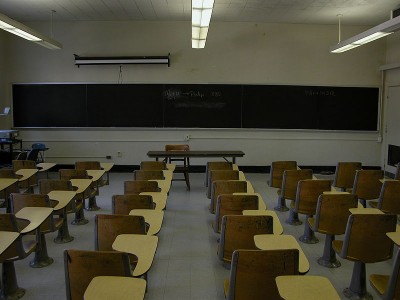A few years ago, when I was teaching at the United World College in Hong Kong, an Irish friend told me that there are thousands of teachers across the U.S. who have been accused of various “crimes” and thus removed from classrooms.
Instead of teaching, they report to “work” each day in what he called “rubber rooms,” where they spend weeks (or months, or years) waiting to be cleared and reinstated, or found guilty and cut loose. While awaiting their hearings, they receive their full salaries.
I was floored and simply couldn’t believe it. In my country? I considered the source of this information: this was the same guy who had told me that paying federal income tax in the U.S. isn’t required by law, a trillion-dollar secret that the IRS desperately doesn’t want anyone to know.
Naaaaaaah. “Rubber rooms” were as much myth as mermaids and minotaurs, I told myself.
But it turns out rubber rooms do exist, and they cost cities like New York upward of $30 million per year. The issue received renewed attention last August when The New Yorker ran a detailed piece by Steven Brill called “The Rubber Room: The Battle Over New York City’s Worst Teachers.” More recently, Jennifer Medina of The New York Times reported that the NYC Department of Education hasn’t had much success speeding up the hearing process, noting that only three teachers have been fired for incompetence in the last two years.
Rubber rooms will continue to be in the news in the coming months for at least two reasons.
First, they have come to symbolize what a growing chorus of politicians and policymakers says is awry with modern American education: outdated union contracts that afford teachers too much protection and that make systemic reform almost impossible. As teachers’ unions come under increased pressure to change how they operate, and as the movement to pay teachers based on student performance gains new momentum, lesser-known absurdities like the rubber rooms will come to light.
Second, a new documentary called The Rubber Room will make waves. A trailer of the film can be viewed here, and an advanced screening will be held at New York University on April 16, 2010. In the words of the filmmakers, The Rubber Room “asks the tough questions about ‘the room’ itself, but also relates those questions to larger trends in both New York City and national education. It closely examines the lives of teachers, students, parents and administrators; and glimpses the future of one of society’s most important institutions, that of our public education system.”




